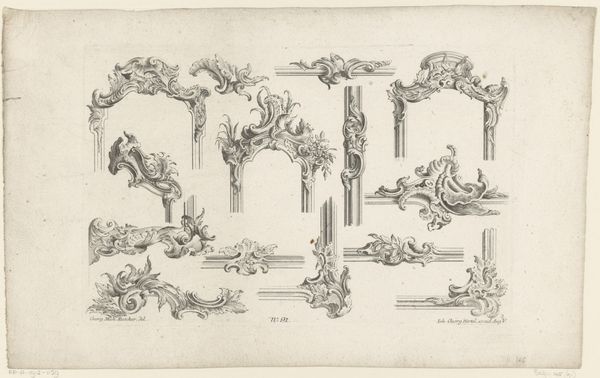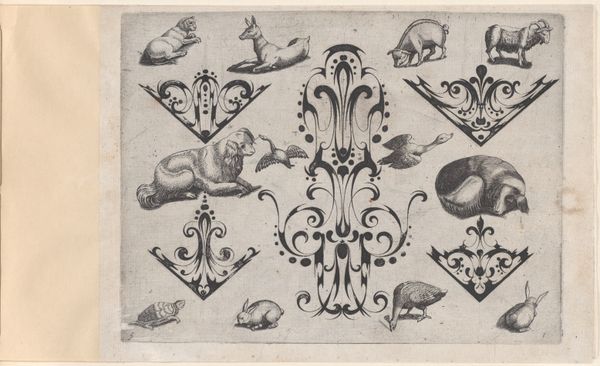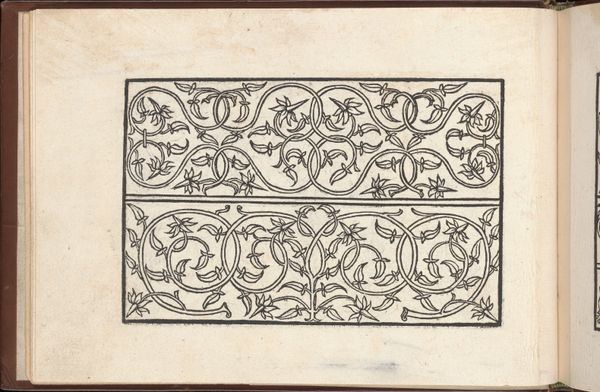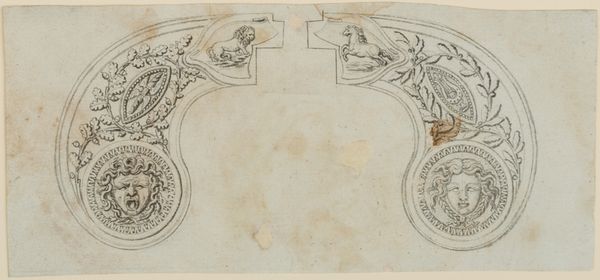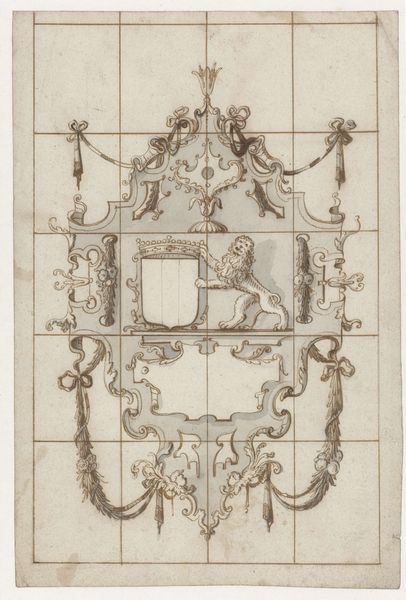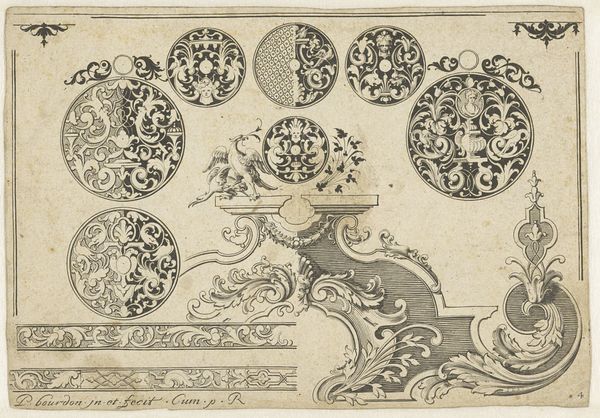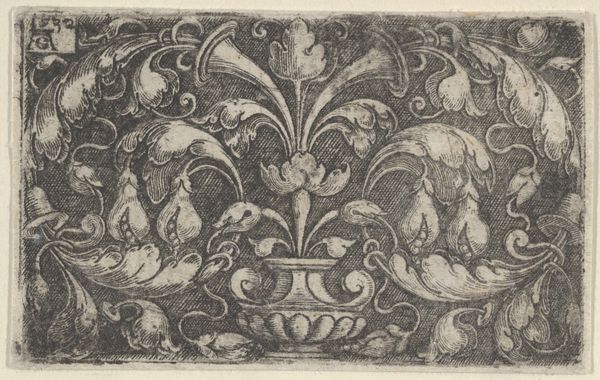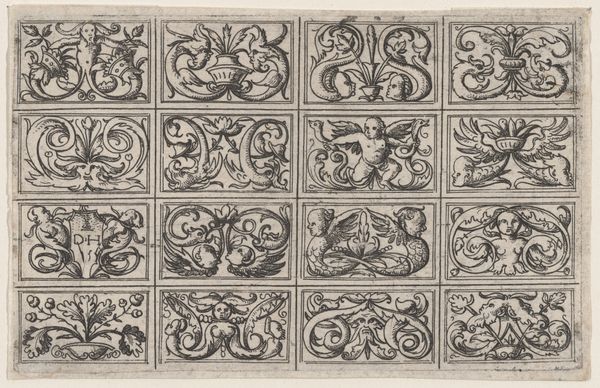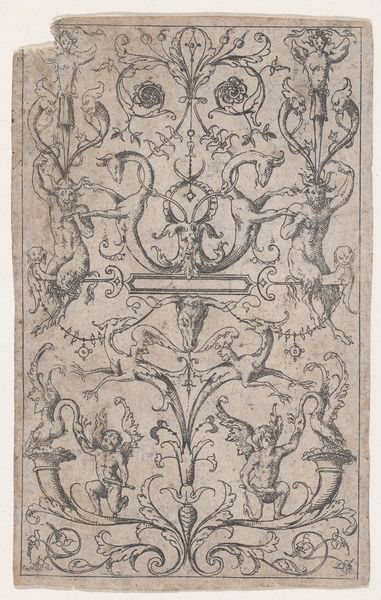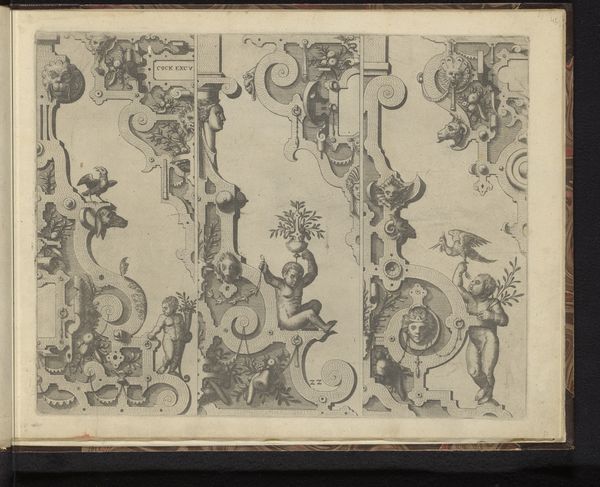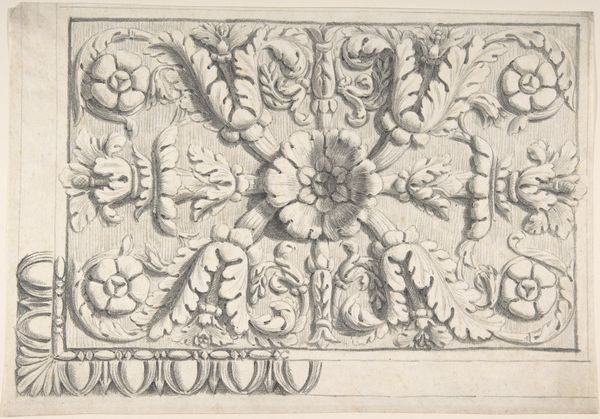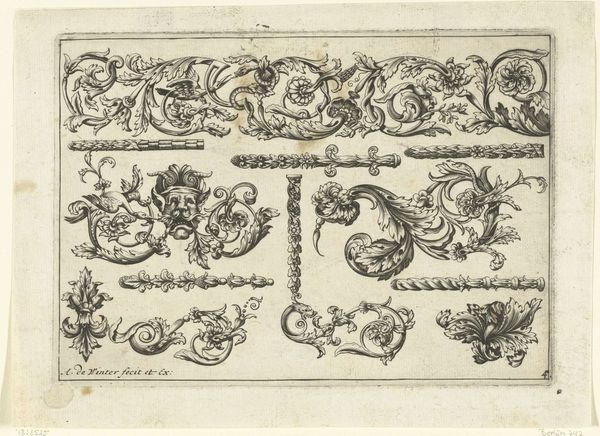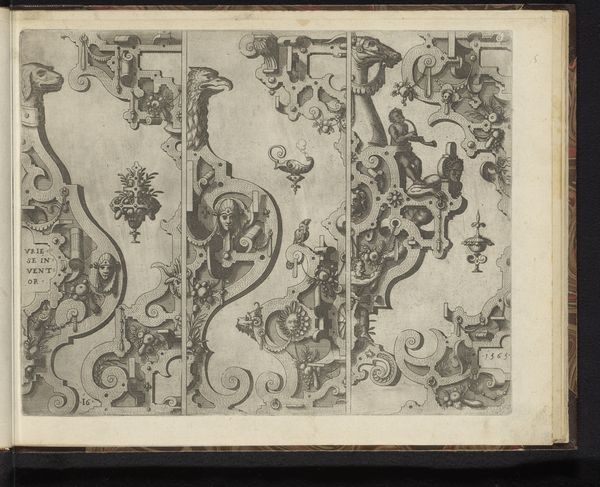
drawing, paper, ink, pen
#
drawing
#
toned paper
#
allegory
#
etching
#
mannerism
#
figuration
#
paper
#
11_renaissance
#
ink
#
linocut print
#
ink drawing experimentation
#
pen work
#
pen
#
miniature
#
watercolor
Dimensions: height 510 mm, width 394 mm, height 520 mm, width 392 mm, height 525 mm, width 395 mm, height 510 mm, width 1181 mm
Copyright: Rijks Museum: Open Domain
Editor: We're looking at "Tabula Cebetis," made sometime between 1538 and 1570 by an anonymous artist. It’s a drawing, ink on toned paper, held at the Rijksmuseum. My first thought is how the ornate frames almost overwhelm the miniature scenes they contain, giving this the air of a craftsman’s sample book. What strikes you about it? Curator: For me, it speaks to the cultural appetite for allegorical imagery in the Renaissance. The 'Tabula Cebetis,' or "Tablet of Cebes", was a popular philosophical allegory describing the path to virtue. The existence of several prints and drawings based upon this specific literary source speaks to the social function of images during this era: as a pedagogical tool. The format and style also underscore the print's intended consumption. Note how it recalls the visual language of pattern books used by artisans and craftsmen. Given this, do you consider it merely decorative, or something more? Editor: I see your point, especially with the framed miniatures within the sheet. It definitely feels like it has didactic aims beyond simple aesthetics. So you’re saying it's less about artistic expression and more about the dissemination of philosophical ideas within a craft or artisan community? Curator: Precisely. The emphasis on accessible, portable formats like drawings and prints allowed these ideas to circulate beyond elite intellectual circles. Mannerism is a prevalent aesthetic in this work, particularly in the elongated figures. Such visual sophistication suggests it wasn't made for a completely uneducated audience, but likely artisans with connections to humanist thought or patrons of the arts who valued visual erudition. Consider who possessed these objects. What were they trying to understand or communicate with its display? Editor: So, in viewing this, one sees a convergence of art, philosophy, and the evolving role of visual media in Renaissance society. Curator: Exactly! This drawing reflects how visual culture helped transmit philosophical ideas to wider audiences. Editor: That definitely gives me a new appreciation for what I initially saw as simply ornamental. Curator: It's fascinating how something seemingly decorative can reveal so much about the cultural values and social networks of its time.
Comments
No comments
Be the first to comment and join the conversation on the ultimate creative platform.
